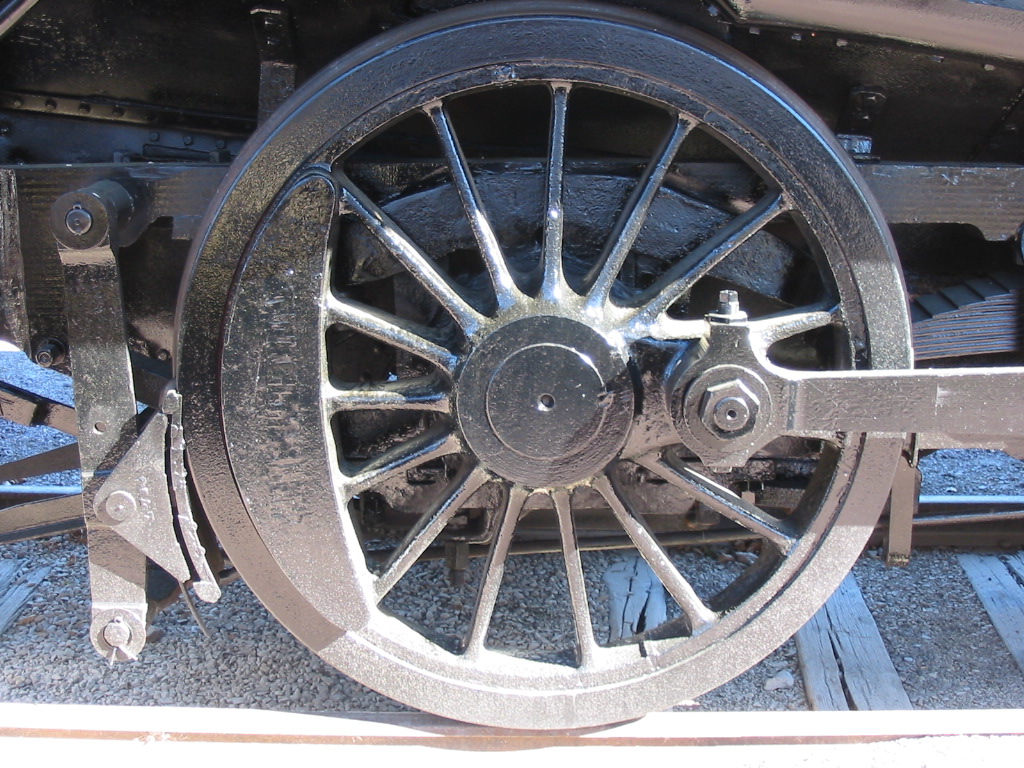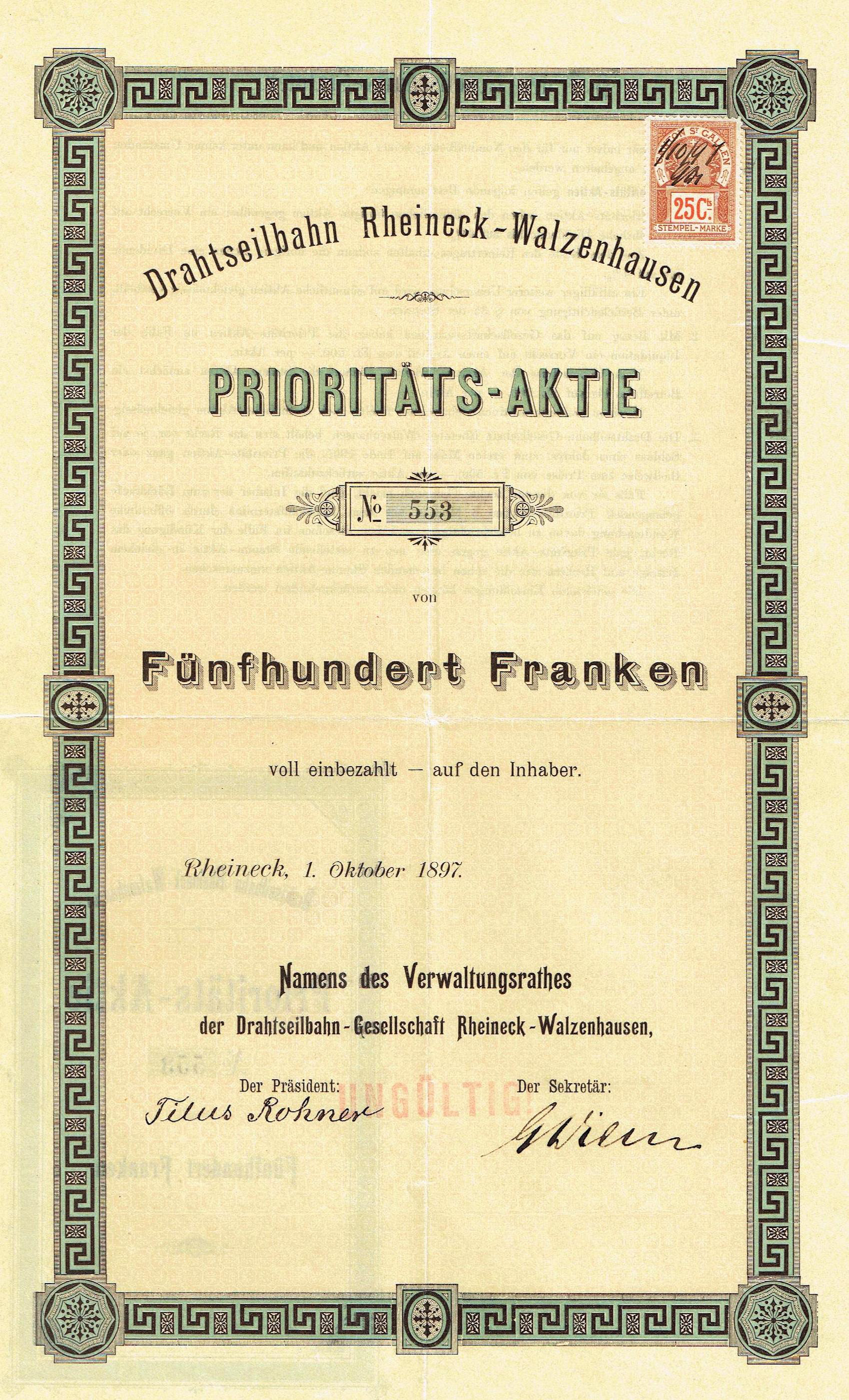|
Altstätten–Gais Railway Line
The Altstätten–Gais railway is a metre-gauge railway in Switzerland. The 7.65 kilometre-long line was opened in 1911 by the ''Altstätten-Gais-Bahn'' (AG) and has been operated by the Appenzell Railways (''Appenzeller Bahnen'', AB). Three sections of the line are equipped with the Strub rack system, while the rest of the line uses adhesion. History The line from Altstätten Stadt via Stoss to Gais—where there was a connection to the line of the St. Gallen-Gais-Appenzell-Altstätten-Bahn (St. Gallen-Gais-Appenzell-Altstätten Railway) to St. Gallen—was opened on 18 November 1911 and operated with three CFe 3/3 class railcars. The three rack sections with a total of 3264 metres in length are located between Altstätten and Stoss, while the rest of the line to Gais is an adhesion railway. The railway was electrically operated at 1000V DC from the beginning. Another short section in the old town of Altstätten was opened on 26 June 1912 between ''Sta ... [...More Info...] [...Related Items...] OR: [Wikipedia] [Google] [Baidu] |
Overhead Line
An overhead line or overhead wire is an electrical cable that is used to transmit electrical energy to electric locomotives, trolleybuses or trams. It is known variously as: * Overhead catenary * Overhead contact system (OCS) * Overhead equipment (OHE) * Overhead line equipment (OLE or OHLE) * Overhead lines (OHL) * Overhead wiring (OHW) * Traction wire * Trolley wire This article follows the International Union of Railways in using the generic term ''overhead line''. An overhead line consists of one or more wires (or rails, particularly in tunnels) situated over rail tracks, raised to a high electrical potential by connection to feeder stations at regular intervals. The feeder stations are usually fed from a high-voltage electrical grid. Overview Electric trains that collect their current from overhead lines use a device such as a pantograph, bow collector or trolley pole. It presses against the underside of the lowest overhead wire, the contact wire. Current collectors ar ... [...More Info...] [...Related Items...] OR: [Wikipedia] [Google] [Baidu] |
Adhesion Railway
An adhesion railway relies on adhesion traction to move the train. Adhesion traction is the friction between the drive wheels and the steel rail. The term "adhesion railway" is used only when it is necessary to distinguish adhesion railways from railways moved by other means, such as by a stationary engine pulling on a cable attached to the cars or by railways that are moved by a pinion meshing with a rack. The friction between the wheels and rails occurs in the wheel-rail interface or contact patch. The traction force, the braking forces and the centering forces, all contribute to stable running. However, running friction increases costs by requiring higher fuel consumption and by increasing the maintenance needed to address fatigue (material) damage, wear on rail heads and on the wheel rims and rail movement from traction and braking forces. Variation of friction coefficient Traction or friction is reduced when the top of the rail is wet or frosty or contaminated with greas ... [...More Info...] [...Related Items...] OR: [Wikipedia] [Google] [Baidu] |
Metre Gauge Railways In Switzerland
The metre (British spelling) or meter (American spelling; see spelling differences) (from the French unit , from the Greek noun , "measure"), symbol m, is the primary unit of length in the International System of Units (SI), though its prefixed forms are also used relatively frequently. The metre was originally defined in 1793 as one ten-millionth of the distance from the equator to the North Pole along a great circle, so the Earth's circumference is approximately km. In 1799, the metre was redefined in terms of a prototype metre bar (the actual bar used was changed in 1889). In 1960, the metre was redefined in terms of a certain number of wavelengths of a certain emission line of krypton-86. The current definition was adopted in 1983 and modified slightly in 2002 to clarify that the metre is a measure of proper length. From 1983 until 2019, the metre was formally defined as the length of the path travelled by light in a vacuum in of a second. After the 2019 redefiniti ... [...More Info...] [...Related Items...] OR: [Wikipedia] [Google] [Baidu] |
S-Bahn St
The S-Bahn is the name of hybrid urban- suburban rail systems serving a metropolitan region in German-speaking countries. Some of the larger S-Bahn systems provide service similar to rapid transit systems, while smaller ones often resemble commuter or even regional rail. The term derives from ''Schnellbahn'', ''Stadtbahn'' or ''Stadtschnellbahn''. Similar systems in Switzerland are known as S-Bahn as well. In Belgium it is known as S-Trein (Flemish) or Train S (French). In Belgium there are S-Trains in the five largest cities: Brussels, Antwerp, Liège, Ghent and Charleroi. In Denmark, they are known as S-tog , in the Czech Republic as Esko or S-lines. Characteristics There is no complete definition of an S-Bahn system. S-Bahn are, where they exist, the most local type of railway stopping at all existing stations inside and around a city, while other mainline trains only call at major stations. They are slower than mainline railways but usually serve as fast crosstown se ... [...More Info...] [...Related Items...] OR: [Wikipedia] [Google] [Baidu] |
Neue Zürcher Zeitung
The ''Neue Zürcher Zeitung'' (''NZZ''; "New Journal of Zürich") is a Swiss, German-language daily newspaper, published by NZZ Mediengruppe in Zürich. The paper was founded in 1780. It was described as having a reputation as a high-quality newspaper, as the Swiss-German newspaper of record, and for objective and detailed reports on international affairs. History and profile One of the oldest newspapers still published, it originally appeared as ''Zürcher Zeitung'', edited by the Swiss painter and poet Salomon Gessner, on 12 January 1780, and was renamed as ''Neue Zürcher Zeitung'' in 1821. According to Peter K. Buse and Jürgen C. Doerr many prestige German language newspapers followed its example because it set "standards through an objective, in-depth treatment of subject matter, eloquent commentary, an extensive section on entertainment, and one on advertising." Aside from the switch from its blackletter typeface in 1946, the newspaper has changed little since the 19 ... [...More Info...] [...Related Items...] OR: [Wikipedia] [Google] [Baidu] |
Rheineck–Walzenhausen Mountain Railway
The Rheineck–Walzenhausen mountain railway (german: Bergbahn Rheineck–Walzenhausen; RhW) is a long rack railway in Switzerland. It links Rheineck station, in the municipality of Rheineck and the canton of St Gallen, with the village and health resort of Walzenhausen, in the canton of Appenzell Ausserrhoden. Passenger service on the line now forms part of the St. Gallen S-Bahn, branded as the S26. The line is owned and operated by the Appenzell Railways company, which also operates several other railway lines in the two Appenzell cantons. History The concession for the construction of a rail link between Rheineck and Walzenhausen was granted in 1889. The ''Drahtseilbahn-Gesellschaft Rheineck-Walzenhausen'' company started construction in 1895 and the line opened on 27 June 1896. As constructed, the line was a water operated funicular railway that linked the current upper station at Walzenhausen with a lower station at Ruderbach, some short of Rheineck station. In 1909, a ... [...More Info...] [...Related Items...] OR: [Wikipedia] [Google] [Baidu] |
Rorschach–Heiden Railway
The Rorschach–Heiden railway (german: Rorschach-Heiden-Bahn, RHB) is a railway line and former railway company in Switzerland. It is a standard gauge Mountain railway, mountain rack railway, using the Riggenbach rack system and is part of Appenzeller Bahnen. The route links Rorschach, St. Gallen, Rorschach with Heiden, Switzerland, Heiden. The line is popular with tourists for its scenic views over Lake Constance. During the summer months, it is operated with old open coaches. bodensee.eu Route The separate RHB line starts a half a kilometre east of Rorschach station, shortly after it branches off from the Rorschach – Chur line belonging to the Swiss Federal Railways (SBB). The property line is exactly at kilometre 64.41483. The ...[...More Info...] [...Related Items...] OR: [Wikipedia] [Google] [Baidu] |
Appenzell Ausserrhoden
Appenzell Ausserrhoden (; in English sometimes Appenzell Outer Rhodes) (german: Kanton Appenzell Ausserrhoden; rm, Chantun Appenzell Dadora; french: Canton d'Appenzell Rhodes-Extérieures; it, Canton Appenzello Esterno) is one of the 26 cantons forming the Swiss Confederation. It is composed of twenty municipalities. The seat of the government and parliament is Herisau, and the seat of judicial authorities are in Trogen. It is traditionally considered a " half-canton", the other half being Appenzell Innerrhoden. Appenzell Ausserrhoden is located in the north east of Switzerland. Together with the canton of Appenzell Innerrhoden, it forms an enclave within the canton of St. Gallen. The canton is essentially located in the Alpine foothills of the Alpstein massif, culminating at the Säntis. Appenzell Ausserrhoden was part of the historical canton of Appenzell, which was divided into Appenzell Innerrhoden (Catholic) and Appenzell Ausserrhoden (Protestant) in 1597 as a result of ... [...More Info...] [...Related Items...] OR: [Wikipedia] [Google] [Baidu] |
Cantons Of Switzerland
The 26 cantons of Switzerland (german: Kanton; french: canton ; it, cantone; Sursilvan and Surmiran: ; Vallader and Puter: ; Sutsilvan: ; Rumantsch Grischun: ) are the member states of the Swiss Confederation. The nucleus of the Swiss Confederacy in the form of the first three confederate allies used to be referred to as the . Two important periods in the development of the Old Swiss Confederacy are summarized by the terms ('Eight Cantons'; from 1353–1481) and ('Thirteen Cantons', from 1513–1798).rendered "the 'confederacy of eight'" and "the 'Thirteen-Canton Confederation'", respectively, in: Each canton of the Old Swiss Confederacy, formerly also ('lieu/locality', from before 1450), or ('estate', from ), was a fully sovereign state with its own border controls, army, and currency from at least the Treaty of Westphalia (1648) until the establishment of the Swiss federal state in 1848, with a brief period of centralised government during the Helvetic Republic ( ... [...More Info...] [...Related Items...] OR: [Wikipedia] [Google] [Baidu] |

.jpg)






